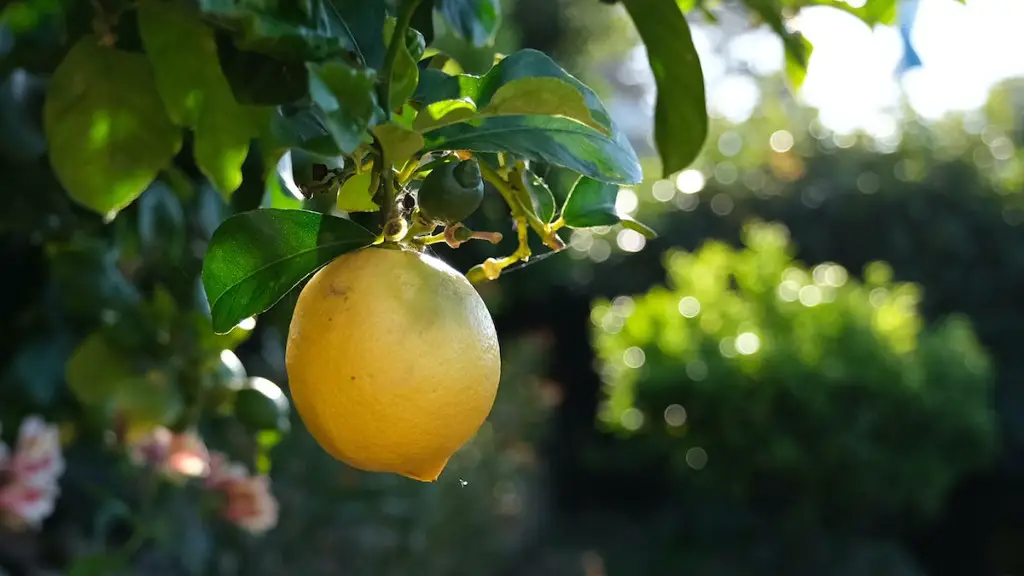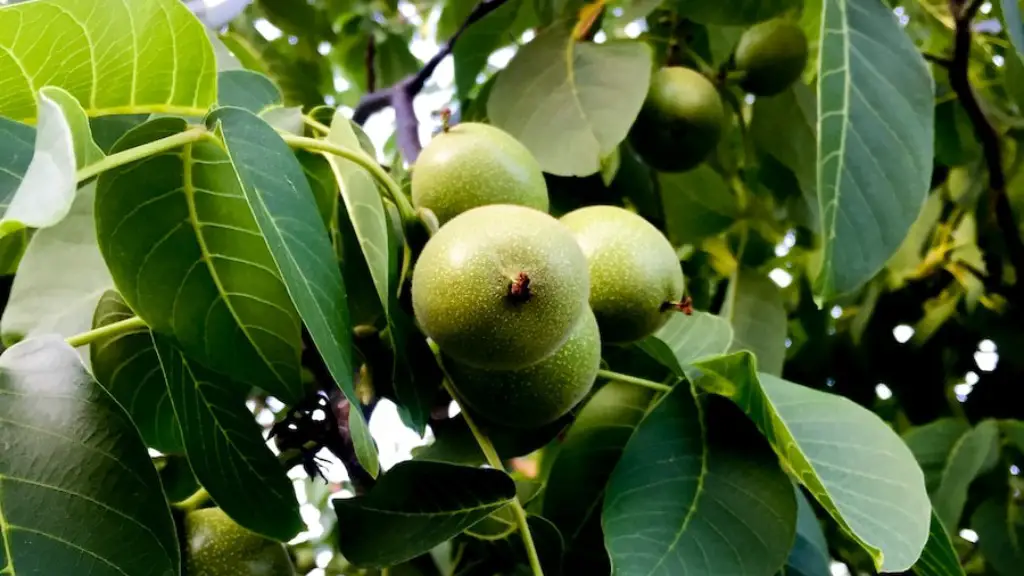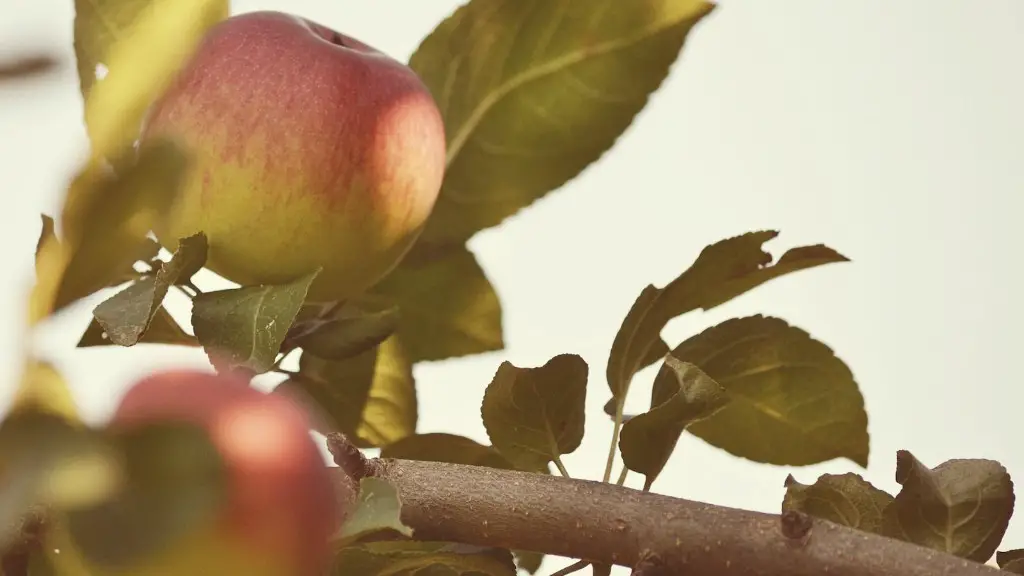Having a lemon tree in the backyard is a great way to add fresh lemons to everyday recipes without having to leave the comfort of one’s home. But as we know, growing a lemon tree can be a challenge; especially in Florida. In order to cultivate a successful lemon tree, there are specific measures one must follow.
The first step to planting a lemon tree in Florida is to find the right spot. The lemon tree will thrive in an area of full sunshine, with the occasional midday break from any intense heat. While shade for these trees is beneficial, it is recommended to suspend any full-shade environment.
The next step is to dig the soil. While these trees tend to grow in various types of soils, making a proper mix is beneficial; especially for Florida’s sandy soils. To make the mix, adding in screened compost along with sand and topsoil is ideal.
The third step is to choose the right variety of citrus tree. While there are many varieties of citrus, the most popular tree grown in Florida’s backyard is the Lisbon variety for its sweet flavor, high yield, and fast maturity. The pH of the soil must also be tested and should have a rating of 6-7, as the lemon tree needs an acidic environment.
Finally, it is time to plant the lemon tree. Plant the trees far enough apart to prevent any potential competition over resources, such as water and soil nutrition. Also, make sure to put the trees while they are still in their pot as lemon trees don’t take very well to being transplanted.
Tending To The Lemon Tree
Once the lemon tree is planted, maintaining it becomes the primary task. Lemon trees require deep and frequent watering during the hotter months to ensure they receive sufficient moisture. Avoid the risk of over-watering by checking the soil before and feel if it is dry.
Fertilization is also an important part of tending to the lemon tree. Fertilizer with a high nitrogen rating facilitates healthy and ample growth for a successful crop. Make sure to stop fertilizing during the winter months to reduce the risk of nitrogen burn.
To get the most yield from the lemon tree, give it a good prune at least once a year. Prune the tree in the fall season by removing any dead or diseased branches and any wayward branches. Pruning also promotes growth and is beneficial for the health of the lemon tree.
Most importantly, watch out for any pests. While an occasional insect is to be expected, harmful critters, such as aphids and mealybugs, can reduce the plant’s quality and quantity of yield. Keeping an eye on the tree and intervening when necessary will help keep the lemon tree safe and able to yield a great harvest.
Choosing The Right Tools
Having the right tools can ensure lemon trees are properly planted and maintained. An extra-wide trowel makes the digging of the hole easier than a basic tool; this is especially helpful for places with difficult soils, such as Florida’s sandy soils. For fertilization, a spreader can take the guesswork out of finding the proper placement. A watering bag is also very useful for watering the tree, as it starts from the root and gives it a deep and thorough watering.
When pruning, a sharp pair of bypass pruners is recommended. These pruners can easily make a clean cut through the branch, resulting in an even growth for the tree. Finally, a pesticide spray ensures any bugs that have made their way onto the tree can be eradicated.
Preparing For The Harvest
When the lemon tree is ready to be harvested, there are a few steps to take first. Before reaching up to the tree to pick the lemons, make sure to protect oneself with a long pair of gloves and a sturdy pair of shoes. Lemons trees tend to have many thorns, some of them very sharp and long, so wearing the appropriate safety gear is essential.
After the lemons are picked, it’s time to store them. Storing the lemons requires placing them in an aerated container at room temperature for up to two weeks. Lemons can then also be stored in a refrigerator. For freezing purposes, freeze a few days after the lemons are picked in a well-sealed bag at -10F.
Taking Care Of The Fruit
Taking care of the fruit is the last step in harvesting a lemon tree. To make sure of a successful yield, ripening, harvesting, and storing all need to be included in the caretaking of the fruit. Lemons begin to ripen in the summer months, beginning with the fruit towards the bottom of the tree. To properly harvest the lemons, remove them on their own and with a twist at the base to ensure the best flavor and shelf life.
After harvesting, lemons can be stored many ways. Storing un-cut lemons in a paper bag in the refrigerator is an effective way to keep lemons fresh and provide maximum shelf life. Additionally, lemons can also be stored in an airtight container in the refrigerator with some added water. Lemons can also be kept out of the refrigerator and placed in a sunny, dry, and well-ventilated area for up to two weeks.
Conclusion
In conclusion, having a lemon tree in Florida requires specific measures and attention for success. Finding the right spot, making sure the soil is as acidic as possible and including a compost mix are all necessary steps. Furthermore, selecting the right variety of lemon tree, tending to it and using the right tools such as a spreader, watering bag and pruners are also very important. Additionally, preparing for and taking care of the lemon harvest will ensure a great yield to enjoy.



